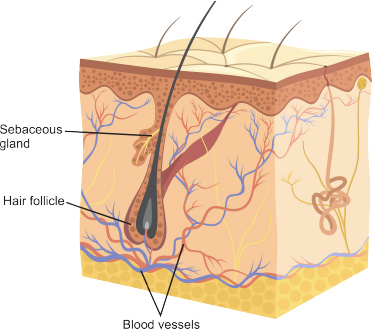The skin's function and structure4
Understanding the skin's function and structure can help you to support and educate customers to manage their skin conditions.
The skin is the largest organ in the body and consists of three layers - the epidermis (outer layer), the dermis (inner layer) and hypodermis (lowermost layer). As well as being a sensory organ, the skin acts as a protective barrier and regulates water loss.4
Click the labels to find out more about the structure.

The epidermis is composed of several layers of developing cells and is constantly regenerating. The outermost layer is the stratum corneum, which acts as a natural barrier against external irritants and allergens to prevent them from entering the dermis, and regulates water loss.
The epidermis consists mostly of keratinocytes, which produce fats such as lipids (free fatty acids), cholesterol and ceramides. These fatty substances act as bonding agents for the skin cells, and therefore play a critical role in maintaining the skin's structure
The dermis is connected to the epidermis. This tough connective tissue matrix is where sweat glands and hair follicles are found4
The hypodermis is the lowest and thickest layer. It is attached to the dermis by elastin and collagen fibres. It is mainly made up of adipocytes, which are responsible for the production and storage of fats4
